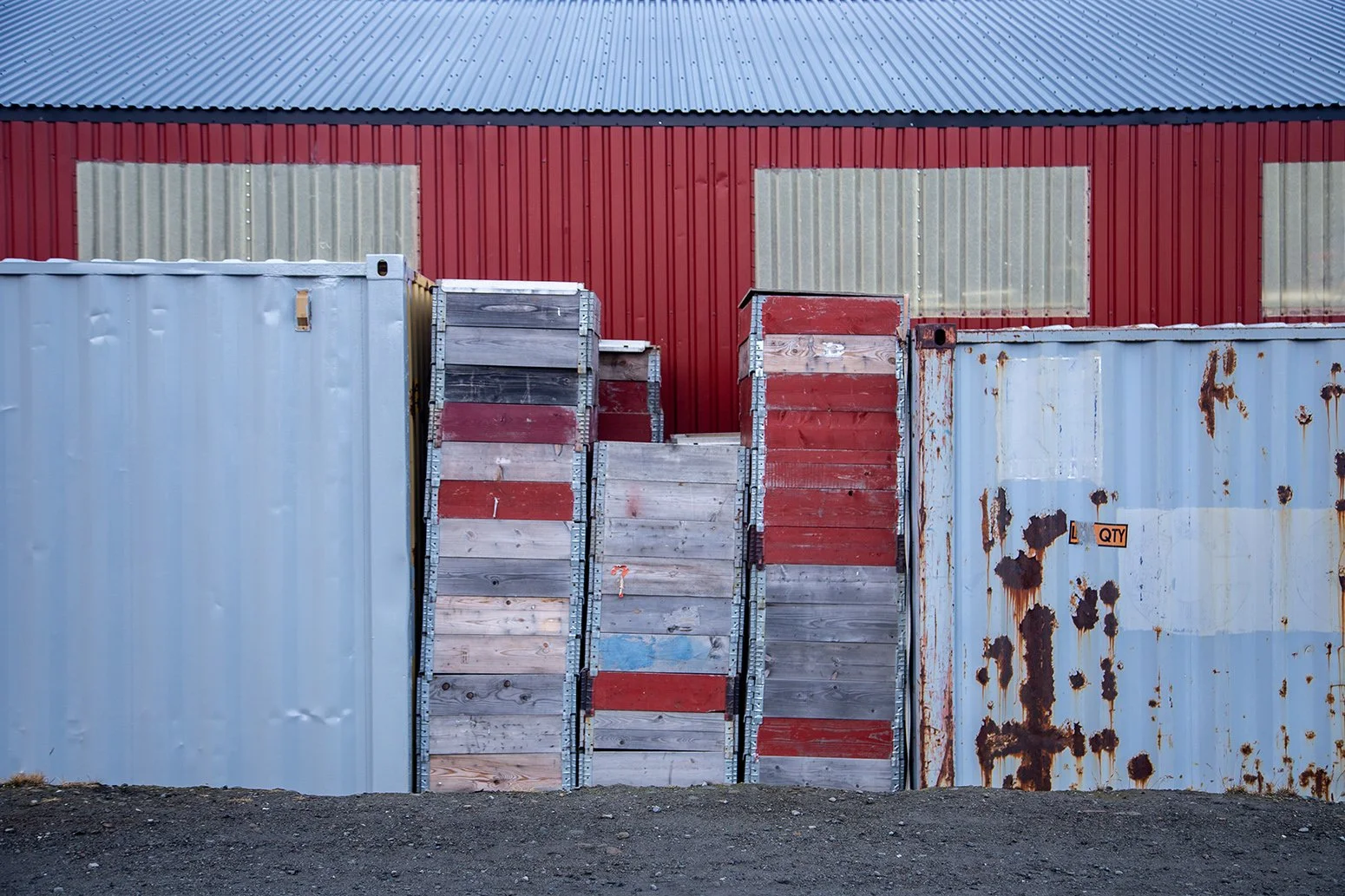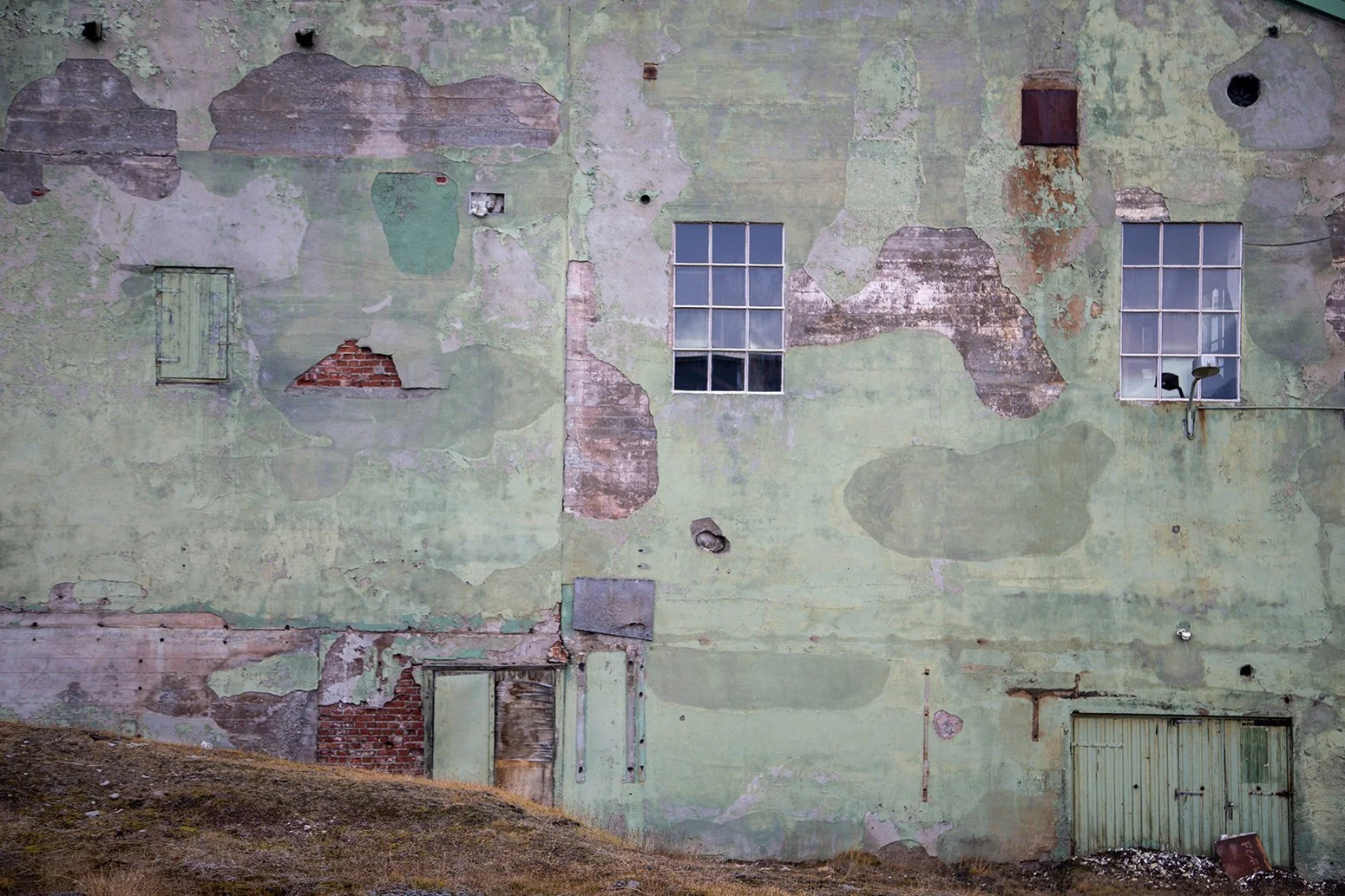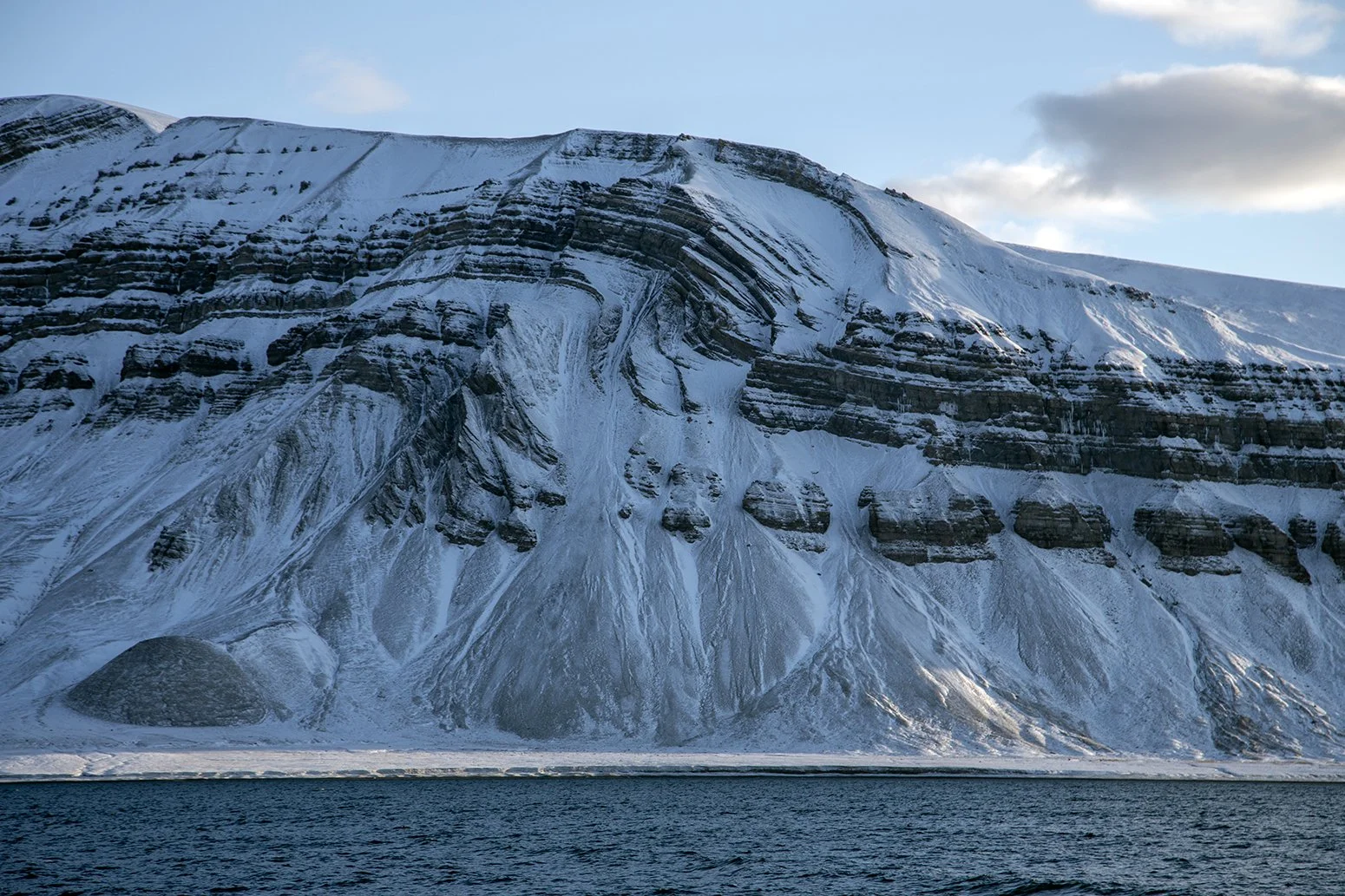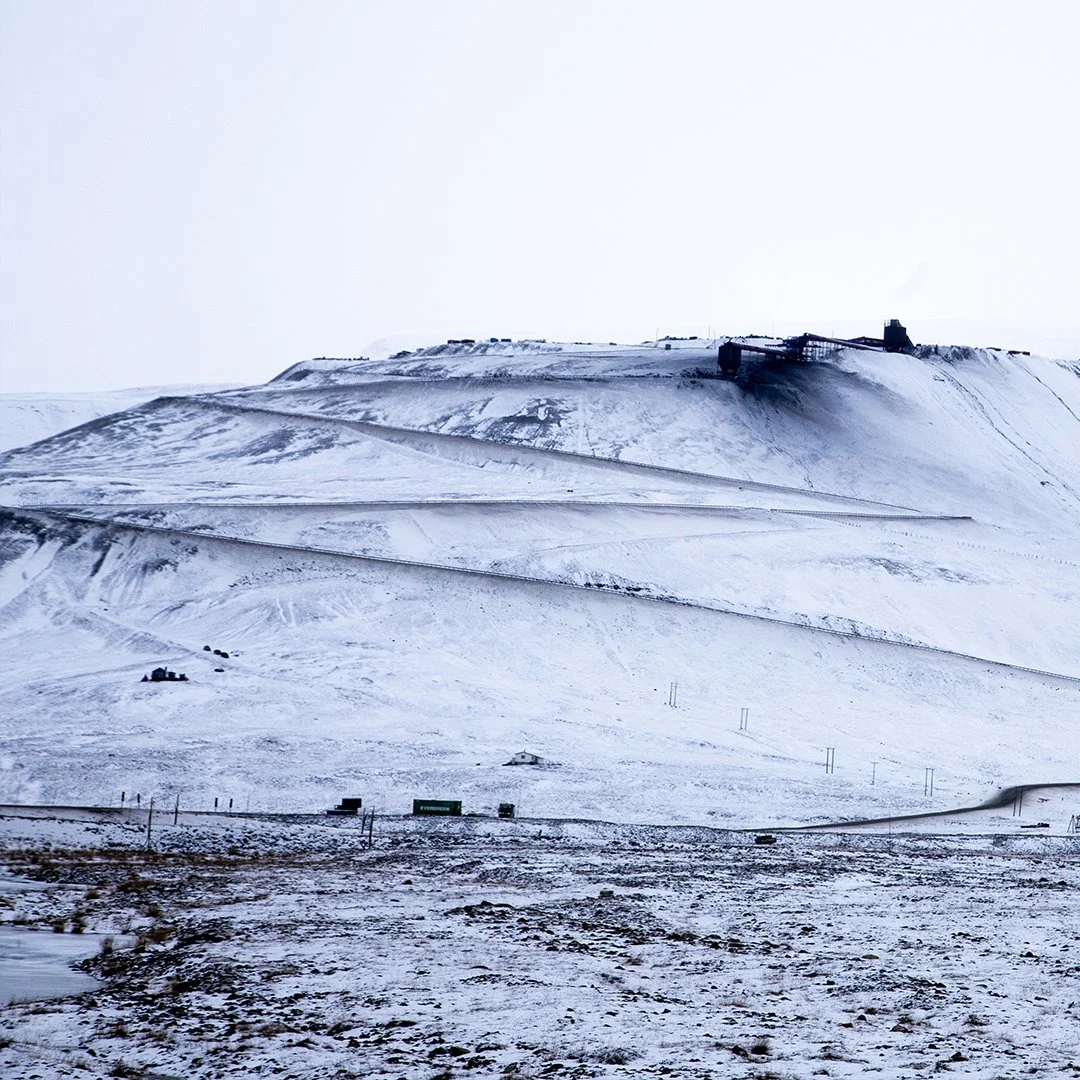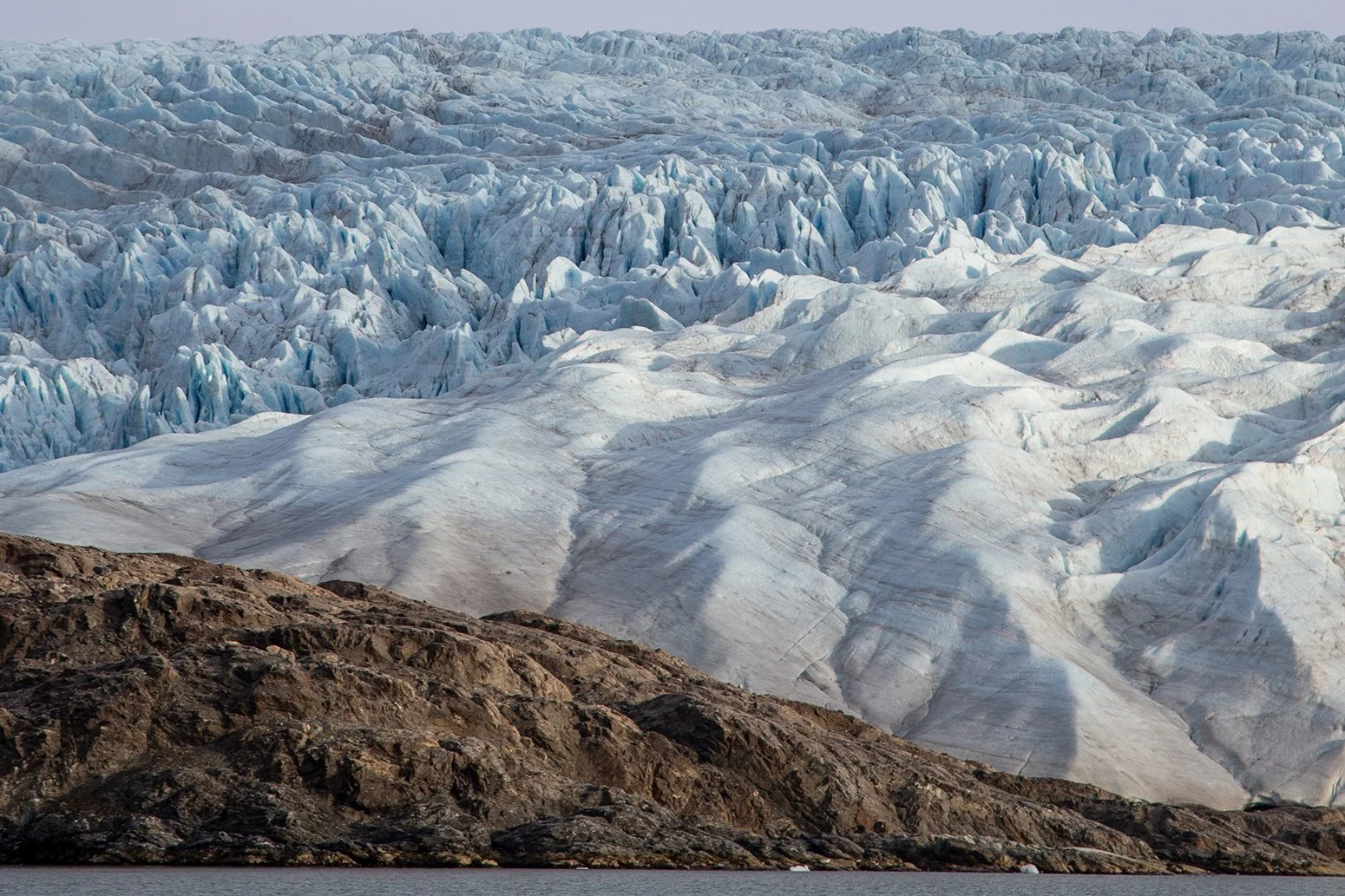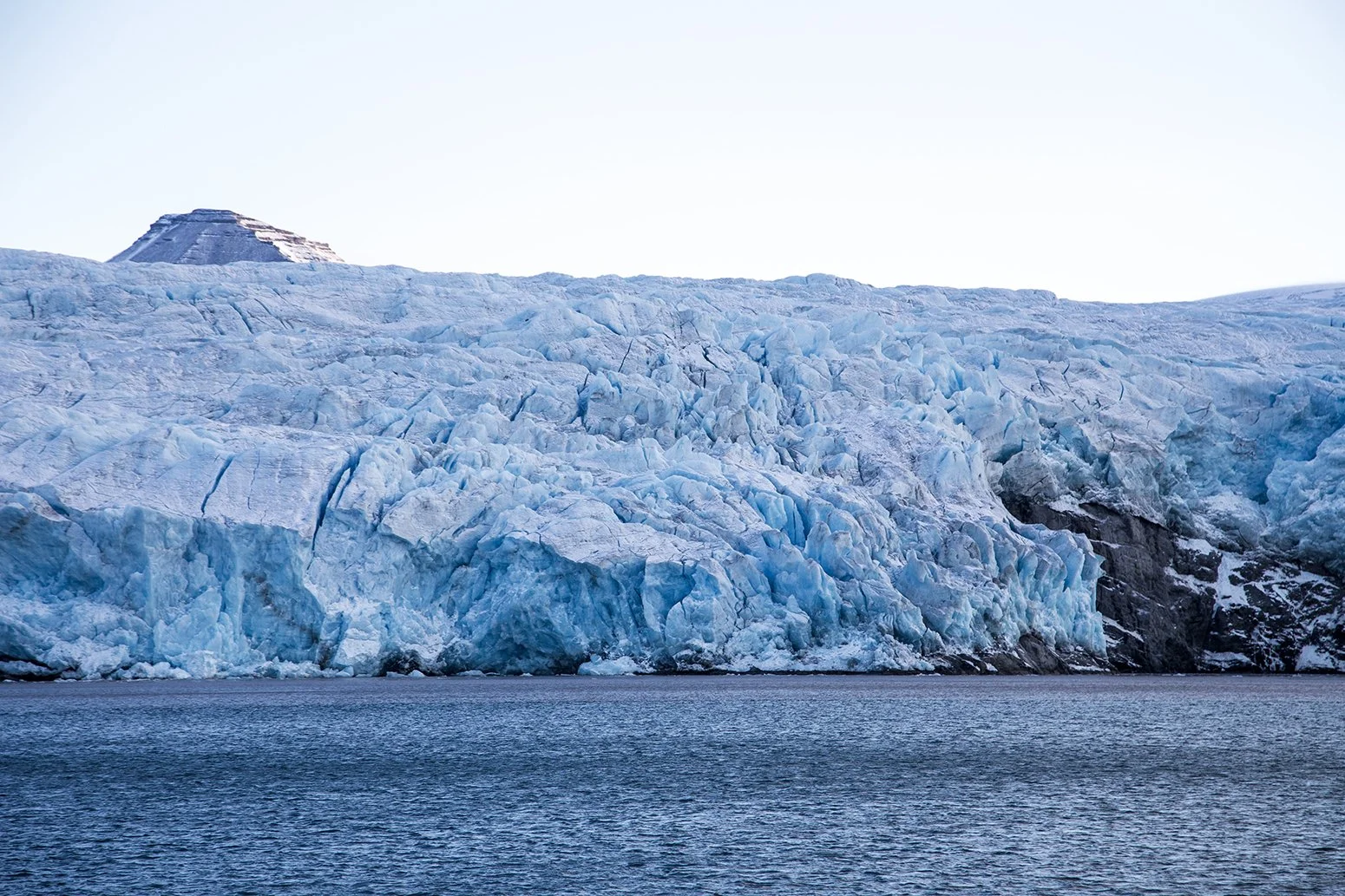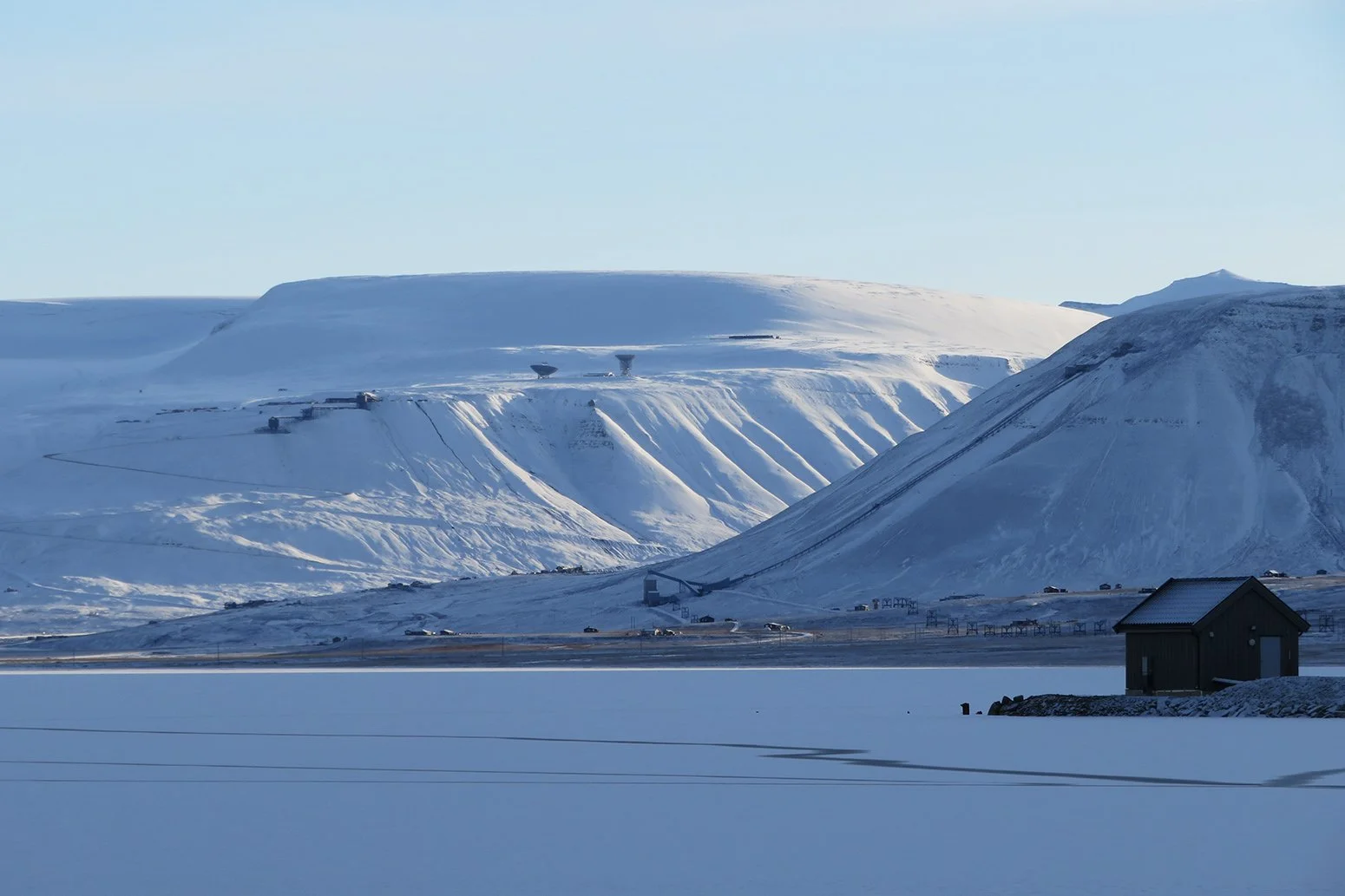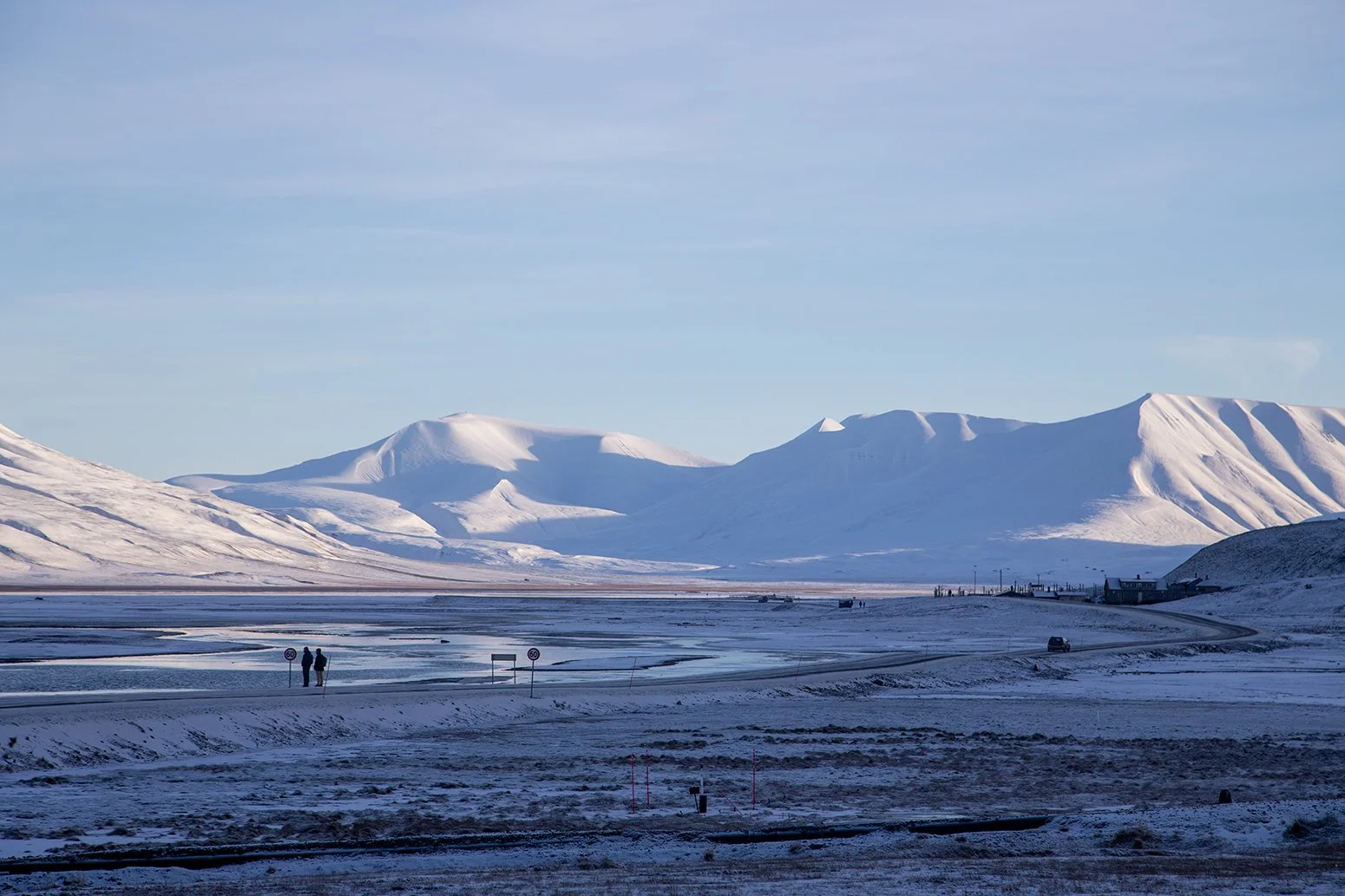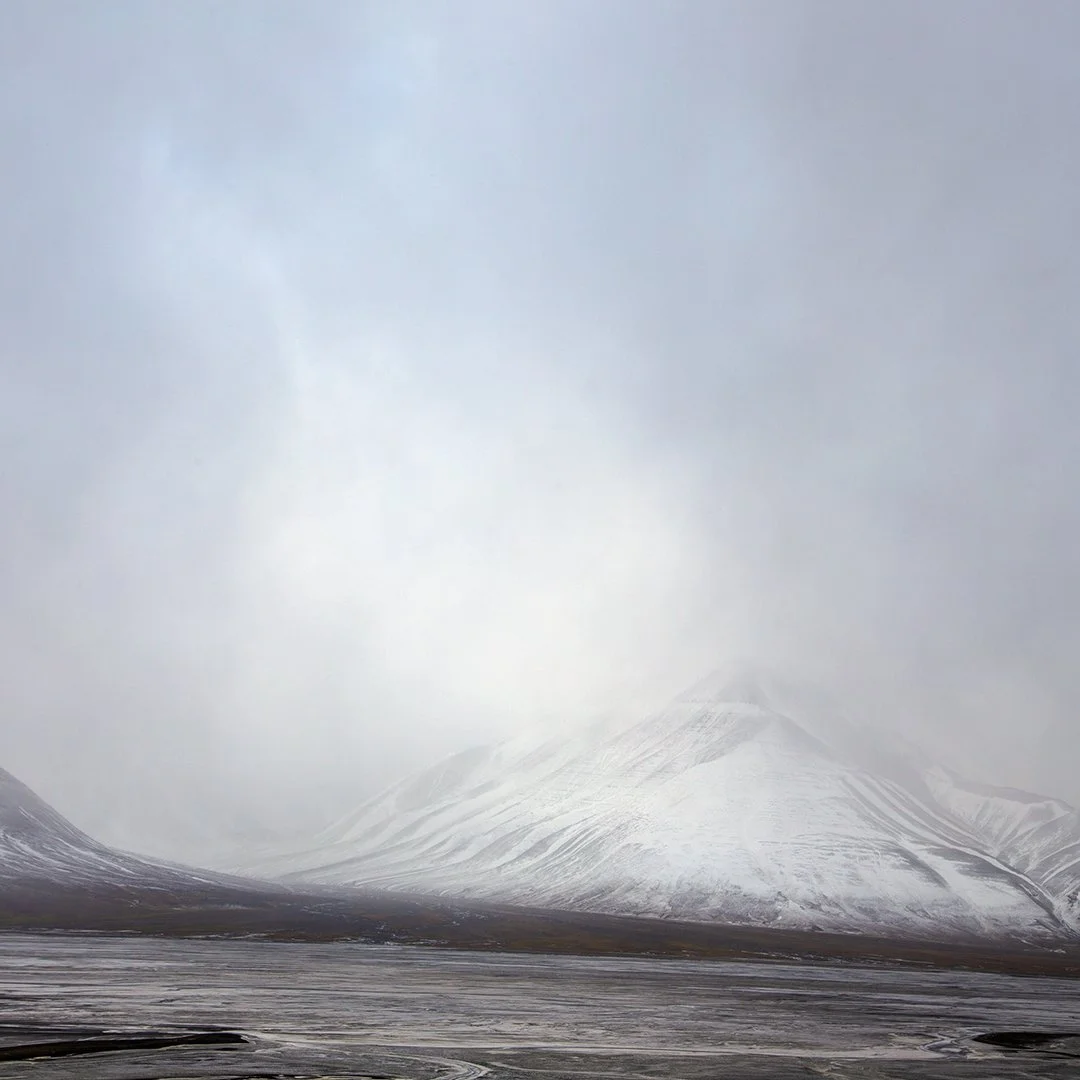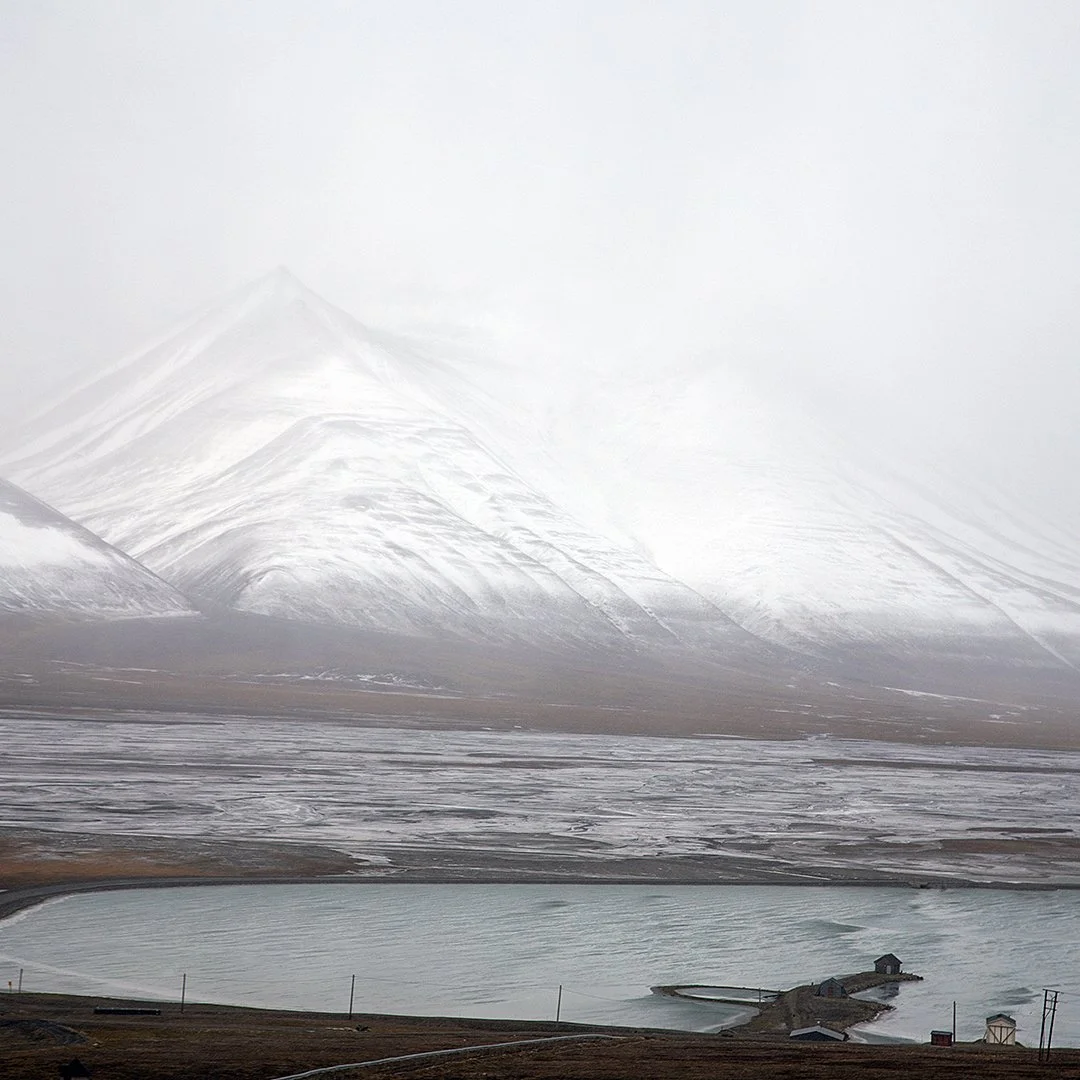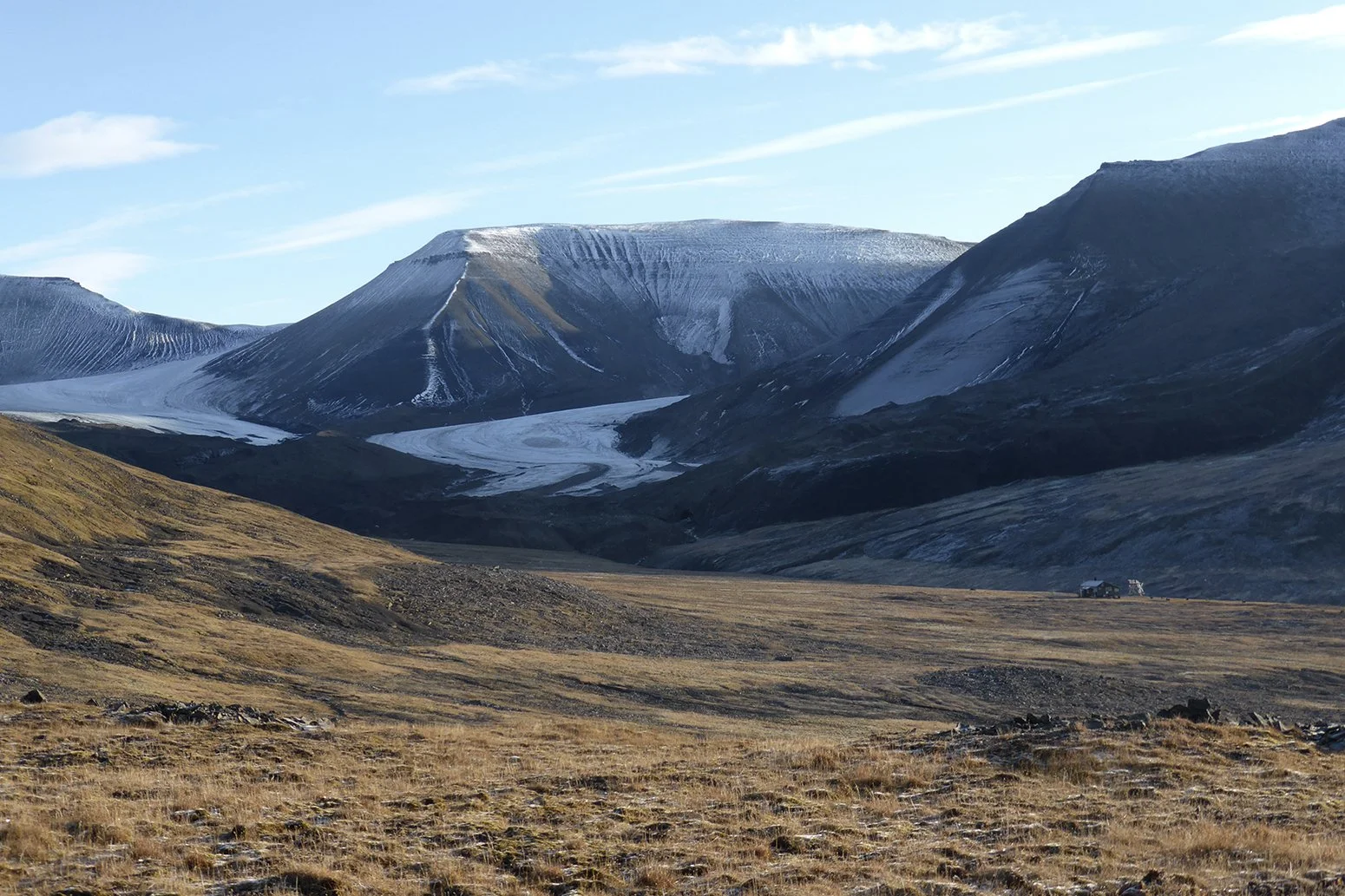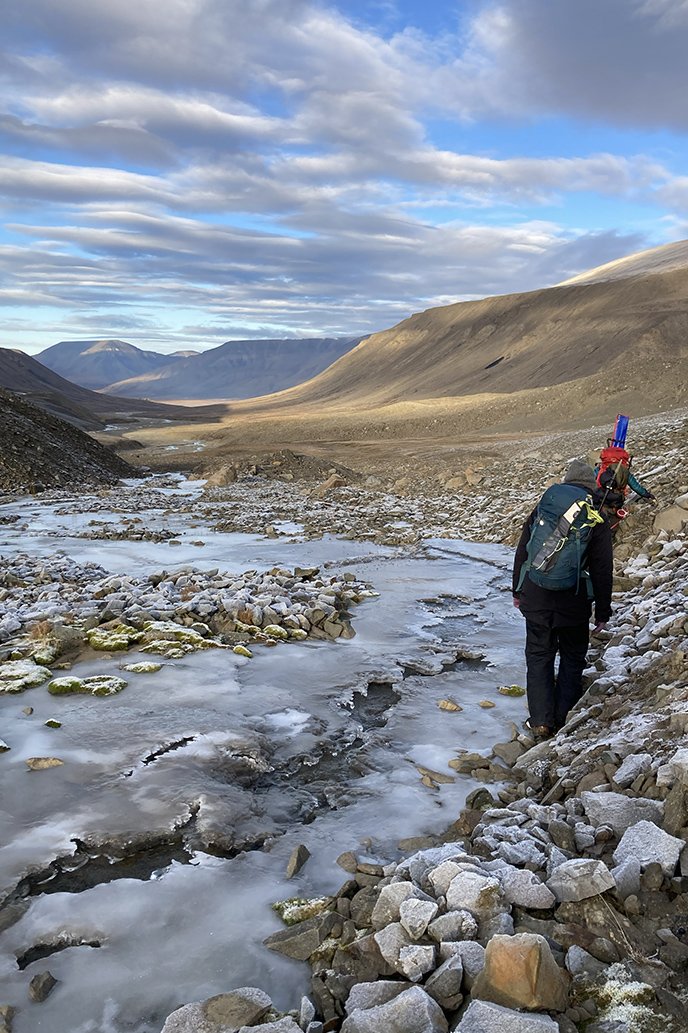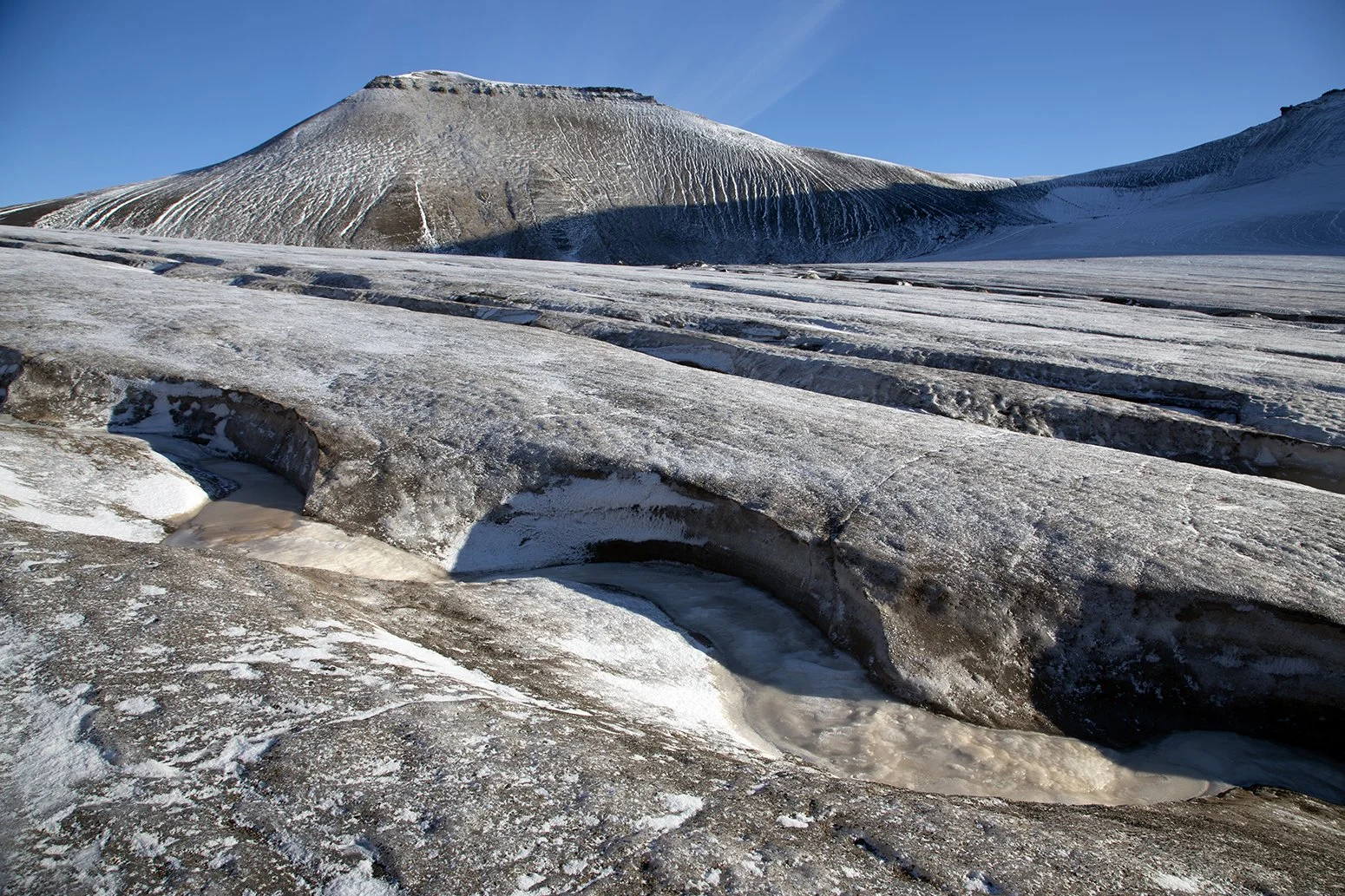Polar bear alert!!
[not an alert for a picture of a bear on this post, but an actual 'bear in the area' alert... but I am getting ahead of myself.]
The third day of the trek started as sunny and still as the first two, although with portentous clouds gathering on the tops of the surrounding peaks. The temperature had dropped noticeably and the light had a false warmth to it.
There was less steep climbing up on the way back out, although what there was was made slightly trickier by the ice that now covered the rocks. Crystals had formed on rocks and mossy ground cover, giving the appearance of frost flowers.
The steep downhill sections that had been lung-busting on the way up were now a delicate balance of rocky path selection and defying the vertigo-inducing view that was included with each step. And if gravity works against you as you try to climb up, it tries to propel you ever faster downhill. In some places it was equal parts exhilarating and terrifying.
The longer we walked, the more ominous the clouds became. As we reached the valley for the home stretch it started to snow. Gently at first, and then the wind increased with some intent – and there is very little cover to stop the wind picking up speed and blowing straight through you.
It was around this point that Emma the guide was pinged with a 'polar bear in the area' alert.
Up until now the slight thrill of 'this is polar bear territory', and the fact Emma had a rifle slung over her shoulder for polar bear protection, had seemed a little academic. But now, here we were in an open valley, and an animal that is waaaay faster than me in any kind of sprint, middle distance or marathon race was close by. I think the sweaty palms were not entirely from the effort of the hike. I was in her back yard and very happy not to intrude further upon her space.
We didn't see her, and hopefully she didn't see us. Humans are having enough impact on her world without her having to see another one.



